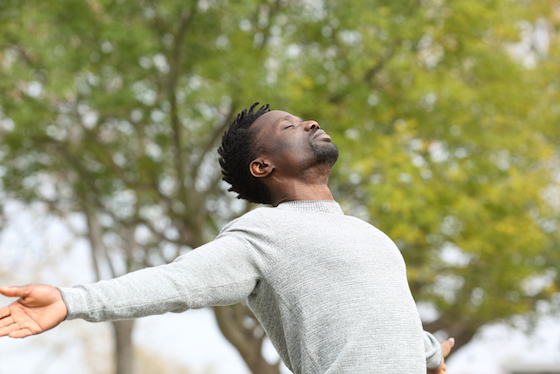Are You Emotionally Present or Emotionally Disconnected?
By Dr. Margaret PaulAugust 23, 2021
Do you move toward your feelings so you can learn from them, or do you move away from them with your various addictions?
 Our society does not foster emotional presence and mindfulness. In fact, we offer a myriad of addictions to avoid feeling our painful emotions, because we have not been taught how to manage them. In many cases, our parents and their parents role-modeled unhealthy, even harmful, mechanisms for avoiding emotional pain: addictions to substances, people, manipulations, activities and things.
Our society does not foster emotional presence and mindfulness. In fact, we offer a myriad of addictions to avoid feeling our painful emotions, because we have not been taught how to manage them. In many cases, our parents and their parents role-modeled unhealthy, even harmful, mechanisms for avoiding emotional pain: addictions to substances, people, manipulations, activities and things.
Ask yourself this. When you want to binge, eat sugar, drink alcohol, use drugs, smoke, yell, blame, hit, appease or resist someone, try to be perfect to get approval, run away, turn on the TV, gamble, shop, masturbate with pornography, demand sex from your partner or compulsively act out in any other way, what are you feeling? Are you turning to your addictions to distract you from feeling lonely, heartbroken, alone, empty, sad, anxious, depressed, scared, angry, guilty, shamed or unworthy?
The idea of feeling your past and present emotional pain may be overwhelmingly scary to you.
The truth is you can learn to handle it. Your fear of painful feelings is based on the beliefs about pain that you acquired in childhood, beliefs that are false now that you are an adult. To move beyond your false beliefs, you must be willing to test them, to prove them false. And to test them, you must resist the urge to blunt your emotions with addictions. Until you stop numbing out in the face of your pain, you will never know that you can feel your pain without going crazy or dying, that your pain is not endless, and that it can be a source of information and strength rather than weakness.
In all the years I have been working with people in pain, I have never had anyone die, explode or go crazy from opening to their pain. I have never met anyone whose pain was unending. Nor do people kill themselves from feeling their painful emotions when they are willing to learn how to heal them, and when they reach out for the appropriate help. It is not opening to painful emotions and learning how to manage them lovingly that causes suicidal feelings; it is sitting in pain with no inner or outer help that causes a person to take his or her own life. Some acts of suicide may be how the wounded self avoids taking responsibility for the emotional pain of the inner child. When you learn and practice Inner Bonding - opening to feeling, learning from, and healing your pain - and learn how to manage and release the deep existential pain of life, there is no longer a need to avoid it.
Even when you are willing to feel your emotional pain (Step 1 of Inner Bonding), it can take a lot of practice to actually do so.
Many of us are so used to ignoring our emotions that the moment we feel a twinge of fear, anxiety or loneliness, we open the refrigerator, pour a drink, grab a cigarette, yell at someone, or turn on the TV. We may even find ourselves doing this before we consciously know we've had a feeling. In order to break this pattern and learn about your feelings and what you believe, think and do that may be causing them, you need to be mindful of what is going on inside your body. You need to begin to focus on your inner experience.
When I tell people that they need to be willing to feel their emotional pain, they often say to me, "What's the big deal about that? I feel my pain all the time." But there is a world of difference between feeling pain and having the willingness to feel it in order to learn from it and take responsibility for it. Willingness includes the capacity to stay with the painful emotion, explore it, own it, find out what you may be thinking or doing that is causing it. There is no healing in just feeling and expressing your emotional pain. You can cry and rage forever, but if you are not willing to take responsibility for your pain, you will be stuck with it forever.
Sometimes people respond with, "Why? Why feel my pain? What's the point?"
They believe that feeling emotional pain - especially the heartbreak of childhood - is a waste of time. "Why cry over spilled milk?" they argue. "Why can't we just try to find our joy and skip the pain?" The answer is: because joy and pain are in the same place in the heart. When you put a lid on your pain and stuff it back inside, you put a lid on your joy. You choose to live an emotionally stunted life. You also close your heart to the information that pain can bring you.
Embracing your wounded pain - the pain that you cause, such as anxiety, depression, anger, guilt, shame, aloneness, emptiness - with an intent to learn, is the pathway to loving yourself rather than abandoning yourself. Embracing your existential pain of life – loneliness, heartbreak, helplessness over others, grief – with much compassion, allows the pain to move through you. Stuck pain can cause illness, so I hope you have the courage to learn to lovingly manage your pain rather than avoid it.
Join Dr. Margaret Paul for her 30-Day at-home Course: "Love Yourself: An Inner Bonding Experience to Heal Anxiety, Depression, Shame, Addictions and Relationships."
 Send this article to a friend
Send this article to a friend  Print this article
Print this article  Bookmarked 1 time(s)
Bookmarked 1 time(s)
| Related Articles |
|---|
| What Was Missing in Mindfulness |
| Mindfulness: The Power of Step One of Inner Bonding |
| Becoming Aware of Your Feelings |
Comments
| Author | Comment | Date |
|---|---|---|
| Join the Inner Bonding Community to add your comment to articles and see the comments of others... | ||

Daily Inspiration
Today, notice what you do to avoid painful feelings. Do you stay in your head instead of in your body? Do you keep your breath shallow? Do you get angry, withdrawn, judgmental? Do you use food, alcohol, drugs, sex, spending, gambling, work, TV? Today, compassionately embrace and learn from your feelings rather than avoiding them, and see how you end up feeling.
By Dr. Margaret Paul

 Share with Del.icio.us
Share with Del.icio.us Share with Digg
Share with Digg








